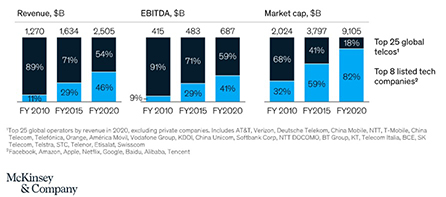Disaggregation: The Foundation
for Agile Networks
Faster time to revenue. Disaggregation allows CSPs to turn up their networks faster and deploy new services with increased velocity. If the unit costs of some components of the
system are scaling faster than others over time, or they are required to support innovative services, it is possible to update just the impacted components without re-architecting the entire
solution.
Reduced CapEx costs. With a multi-vendor ecosystem, CSPs have more choice in hardware and software, with vendors competing for business based on best-in-class components. Focus on merchant silicon and a range of network, compute, and storage platforms reduces single vendor dependency.
Managed supply chain risk. CSPs can mix and match hardware such as optical line terminals (OLTs) and switches from multiple vendors, thereby gaining access to a much larger
supply chain. Disaggregated networks should be seen as a key tool in the CSP toolbox to manage and potentially mitigate risk due to COVID-19 pandemic-induced supply chain disruptions.

Figure 2: Share of Revenue between telcos and technology industry players
click to enlarge
The elements of disaggregation
There are different elements or forms of disaggregation—both technical and commercial.
On the technical side, a CSP can disaggregate based on separating the hardware from the software. A CSP can also disaggregate based on running functions on the cloud, both the public and the private cloud. Disaggregation can also be based on control and user plane separation, for example using a CUPS architecture. In a 5G network, the CSP can run the control plane in the public cloud, while bringing the user plane—and hence services—closer to the end users in a telco or hybrid cloud location.
A CSP could also disaggregate at the network function and workload level. An example of disaggregation in this scenario is the centralized unit (CU) that is separated from the distributed unit (DU) (see figure 3 on next page) .
While disaggregation brings powerful advantages to the table, selecting the right form of disaggregation depends on the functionality and cost profile required to be satisfied by the CSP.
Pulling together highly available performant solutions based on merchant silicon, open-source technologies and vendors remains a challenging task. For these reasons, and to make disaggregation commercially viable, CSPs also need to have access to partners who bring systems integration skillsets, along with any supporting hardware and software development required to pull together the complete solution.



















